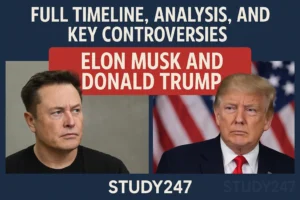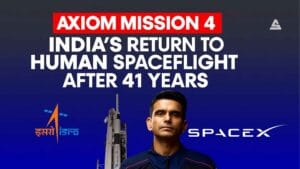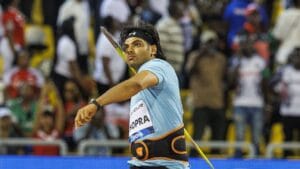Important MCQs covering various aspects of the Constitution of India, including its formation, provisions, fundamental rights, directive principles, and amendments, This set of MCQs resource allows you to assess your comprehension and grasp of constitutional principles.
Indian Constitution MCQ Question and Answer for all competitive Exam
1. The Constitution of India was enacted by a Constituent Assembly set up :
- A. under the Indian Independence Act, 1947
- B. under the Cabinet Mission Plan, 1946
- C. through a resolution of the provisional government
- D. by the Indian National Congress
Correct Answer: under the Cabinet Mission Plan, 1946
2. The Constituent Assembly which framed the constitution for Independent India was set up in :
- A. 1945
- B. 1946
- C. 1947
- D. 1949
Correct Answer: 1946
3. Who presided over the inaugural meeting of the Constituent Assembly of India?
- A. Sachidananda Sinha
- B. B.R. Ambedkar
- C. Dr. Rajendra Prasad
- D. P. Upendra
Correct Answer: Sachidananda Sinha
4. Who among the following was the Chairman of the Drafting Committee of the Indian constitution?
- A. Rajendra Prasad
- B. Tej Bahadur Sapru
- C. C. Rajagopalachari
- D. B. R. Ambedkar
Correct Answer: B. R. Ambedkar
5. How long did the Constituent Assembly take to finally pass the Constitution?
- A. about 6 months in 1949
- B. exactly a year since Nov 26, 1948
- C. about 2 years since Aug 15, 1947
- D. about 3 years since Dec 9, 1946
Correct Answer: about 3 years since Dec 9, 1946
6. Who was the President of the Constituent Assembly?
- A. Pt. Jawaharlal Nehru
- B. Dr. Rajendra Prasad
- C. Dr. B.R. Ambedkar
- D. C. Rajagopalachari
Correct Answer: Dr. Rajendra Prasad
7. The demand for the Constituent Assembly was put forward by the Indian National Congress in 1936 at its session held at :
- A. Kanpur
- B. Bombay
- C. Lucknow
- D. Lahore
Correct Answer: Lucknow
8. The Cabinet Mission to India was headed by :
- A. Stafford Cripps
- B. A.V. Alexander
- C. Lord Pethick Lawrence
- D. Hugh Gaitskell
Correct Answer: Lord Pethick Lawrence
9. The Constitution of India was adopted by the :
- A. Governor General
- B. British Parliament
- C. Constituent Assembly
- D. Parliament of India
Correct Answer: Constituent Assembly
10. The Constituent Assembly for undivided India first met on
- A. 6th December, 1946
- B. 9th December, 1946
- C. 20th February, 1947
- D. 3rd June, 1947
Correct Answer: 9th December, 1946
11. Who among the following was the Chairman of the Union Constitution Committee of the Constituent Assembly?
- A. B.R. Ambedkar
- B. J.B. Kripalani
- C. Jawaharlal Nehru
- D. Alladi Krishnaswami Ayyar
Correct Answer: Jawaharlal Nehru
12. Who among the following was the Constitutional adviser to the Constituent Assembly of India?
- A. Dr.B.N. Rao
- B. Dr.B.R. Ambedkar
- C. K.M. Munshi
- D. M.C. Setalvad
Correct Answer: Dr.B.N. Rao
13. The Constituent Assembly arrived at decisions on the various provisions of the Constitution?
- A. by a majority vote
- B. by a two-thirds majority
- C. by consensus
- D. unanimously
Correct Answer: by consensus
14. The most profound influence on the drafting of the Indian Constitution was exercised by the :
- A. U.S. Constitution
- B. British Constitution
- C. Government of India Act, 1935
- D. French ideals of Liberty and Fraternity
Correct Answer: Government of India Act, 1935
15. The design of the National Flag was adopted by the Constituent Assembly of India in :
- A. July, 1948
- B. July, 1950
- C. July, 1947
- D. August, 1947
Correct Answer: July, 1947
16. The Constitution of India was promulgated on January 26, 1950 because :
- A. this day was being celebrated as the Independence Day since 1929
- B. it was the wish of the framers of Constitution
- C. the British did not want to leave India earlier than this date
- D. it was an auspicious day
Correct Answer: this day was being celebrated as the Independence Day since 1929
17. The idea of the constitution of India was first of all given by :
- A. Mahatma Gandhi
- B. Dr. B.R. Ambedkar
- C. Jawaharlal Nehru
- D. M.N. Roy
Correct Answer: M.N. Roy
18. Which one of the following made the Indian Legislature bicameral :
- A. Indian Councils Act, 1900
- B. Indian Councils Act, 1909
- C. Government of India Act, 1935
- D. Indian Independence Act, 1947
Correct Answer: Government of India Act, 1919
19. The first attempt at introducing a representative and popular element in administration was made by :
- A. Indian Councils Act, 1900
- B. Indian Councils Act, 1909
- C. Government of India Act, 1935
- D. Indian councils Act, 1919
Correct Answer: Indian Councils Act, 1909
20. The Government of India Act, 1935 vested the residuary power in the :
- A. British Parliament
- B. Federal Legislature
- C. State Legislature
- D. Governor - General
Correct Answer: Governor - General
21. Which of the following was not one of the features of Government of India Act, 1935?
- A. Provincial autonomy
- B. Diarchy at the Centre as well as in the provinces
- C. Bicameral Legislature
- D. All India federation
Correct Answer: Diarchy at the Centre as well as in the provinces
22. Which one of the following aimed at providing a federal structure for India?
- A. Indian council Act, 1909
- B. Montague-Chelmsford Reforms Act, 1919
- C. Charter Act, 1831
- D. Government of India Act, 1935
Correct Answer: Government of India Act, 1935
23. What was the main stipulation of Government of India Act, 1935?
- A. A federation was suggested
- B. Unitary form of government was recommended
- C. Complete independence was guaranteed
- D. Diarchy was made applicable at provincial level
Correct Answer: Complete independence was guaranteed
24. Which one among the following statements regarding the Government of India Act, 1935 is not correct?
- A. Provincial autonomy came into existence
- B. Bicameral legislatures were provided in six provinces
- C. The principles of communal electorates and weightages were further extended
- D. The states were compelled to enter the federation
Correct Answer: The states were compelled to enter the federation
25. The first attempt to introduce a representative and popular element in the Governance of India was made through
- A. Indian Council Act, 1861
- B. Indian Council Act, 1892
- C. Indian Council Act, 1909
- D. Government of India Act, 1919
Correct Answer: Indian Council Act, 1861
26. Which of the following Acts introduced communal electorate in India?
- A. Indian Council Act, 1861
- B. Indian Council Act, 1892
- C. Indian Council Act, 1909
- D. Government of India Act, 1935
Correct Answer: Indian Council Act, 1909
27. The Indian Legislature was made bi-cameral for the first time by
- A. Indian Council Act, 1892
- B. Indian Council Act, 1909
- C. The Government of India Act, 1919
- D. The Government of India Act, 1935
Correct Answer: The Government of India Act, 1919
28. The first definite step to provide parliamentary control over East India Company was taken by
- A. the Regulating Act, 1773
- B. the Pitts India Act, 1784
- C. the Charter Act, 1793
- D. the Charter Act, 1813
Correct Answer: the Regulating Act, 1773
29. Through which one of the following were commercial activities of the East India Company finally put to an end?
- A. The Charter Act of 1793
- B. The Charter Act of 1813
- C. The Charter Act of 1833
- D. The Charter Act of 1853
Correct Answer: The Charter Act of 1833
30. Which of the following vested the Secretary of State for India with supreme control over the Government of India?
- A. Pitt's India Act, 1784
- B. Government of India Act, 1858
- C. Indian Council Act, 1861
- D. Morley-Minto Reforms, 1909
Correct Answer: Government of India Act, 1858
31. Dyarchy was first introduced under
- A. Morley-Minto Reforms
- B. Mont-Ford Reforms
- C. Simon Commission Plan
- D. Government of India Act, 1935
Correct Answer: Mont-Ford Reforms
32. The distribution of powers between the Centre and States in the Indian Constitution is based on the scheme provided in the
- A. Morley Minto Reforms, 1909
- B. Montague Chelmsford Act, 1919
- C. Government of India Act, 1935
- D. Indian Independence Act, 1947
Correct Answer: Government of India Act, 1935
33. Article 40 of the Constitution of India advices the state to work for
- A. Uniform civil code
- B. Organisation of Village Panchayats
- C. Constitution of municipalities
- D. Living wages for workers
Correct Answer: Organisation of Village Panchayats
34. Which of the following Act provided for the establishment of Reserve Bank of India?
- A. Government of India Act, 1919
- B. Government of India Act, 1935
- C. Indian Independence Act, 1947
- D. RBI Act, 1935
Correct Answer: Government of India Act, 1935
35. By which of the following Act, the first step taken by the British Government to control and regulate the affairs of East India Company in India.
- A. Regulating Act, 1773
- B. Pitt's India Act, 1784
- C. Charter Act, 1833
- D. Government of India Act, 1861
Correct Answer: Regulating Act, 1773
36. The Cabinet Mission Plan for India envisaged
- A. Federation
- B. Confederation
- C. Unitary form of Government
- D. Union of States
Correct Answer: Federation
37. Which among the following acts for the first time allowed Indians, at theoretically, entry to higher posts in British Indian administration?
- A. Charter Act 1813
- B. Charter Act 1833
- C. Charles Wood's Education 1854
- D. Indian Councils Act 1861
Correct Answer: Indian Councils Act 1861
38. The nationalist demand for a Constituent Assembly was for the first time conceded by the British Government, though indirectly and with reservations in the
- A. Cripps Proposals
- B. August Offer
- C. Cabinet Mission Plan
- D. Act of 1935
Correct Answer: August Offer
39. The Constituent Assembly that finally framed India's Constitution was setup
- A. under the Indian Independence Act
- B. under the Government of India Act, 1935
- C. under the Cabinet Mission Plan, 1946
- D. by the Queen's Proclamation
Correct Answer: under the Cabinet Mission Plan, 1946
40. The members of the Constituent Assembly were
- A. directly elected by the people
- B. all nominated by the Indian National Congress and the Muslim League
- C. indirectly elected by the Provincial Assemblies
- D. all nominated by the British Government
Correct Answer: indirectly elected by the Provincial Assemblies
41. Who among the following was the Chairman of the Union Constitution Committee of the Constituent Assembly?
- A. BR Ambedkar
- B. JB Kripalani
- C. Jawaharlal Nehru
- D. Alladi Krishnaswami Ayyar
Correct Answer: Jawaharlal Nehru
42. Who was the head of the Drafting Committee of the Constitution?
- A. Sachidanand Sinha
- B. BN Rao
- C. Jawaharlal Nehru
- D. BR Ambedkar
Correct Answer: BR Ambedkar
43. What was the basis for Constituting the Constituent Assembly of India?
- A. The resolution of Indian National Congress
- B. The Cabinet Mission Plan, 1946
- C. The Indian Independence Act, 1947
- D. The resolution of the Provincial/State legislature of the Dominion of India
Correct Answer: The Cabinet Mission Plan, 1946
44. Who presided over the first meeting of the Indian Constituent Assembly?
- A. Dr Rajendra Prasad
- B. Sachchidananda Sinha
- C. BR Ambedkar
- D. HV Kamath
Correct Answer: Sachchidananda Sinha
45. The Constituent Assembly of India started functioning from
- A. 9th December, 1946
- B. 1st January, 1947
- C. 26th January, 1947
- D. 15th August, 1947
Correct Answer: 9th December, 1946
46. Who among the following was not a member of the Constituent Assembly?
- A. Sardar Vallabhbhai Patel
- B. Acharya JB Kripalani
- C. Jay Prakash Narayan
- D. KM Munshi
Correct Answer: Jay Prakash Narayan
47. The Constitution of India was completed on
- A. 11th February, 1948
- B. 26th November, 1949
- C. 26th January, 1950
- D. None of the above
Correct Answer: 26th November, 1949
48. To produce the Constitution, the Constituent Assembly took
- A. 2 years 11 months and 18 days
- B. 3 years 10 months and 10 days
- C. 4 years 11 months and 11 days
- D. 5 years 5 months and 5 days
Correct Answer: 2 years 11 months and 18 days
49. The Constituent Assembly set up a Drafting Committee under the Chairmanship of Dr BR Ambedkar on
- A. 13th December, 1946
- B. 22nd January, 1947
- C. 3rd June, 1947
- D. 29th August, 1947
Correct Answer: 29th August, 1947
50. The Constitution is declared to have been adopted and enacted by the
- A. Constituent Assembly
- B. People of India
- C. Indian Parliament
- D. British Parliament
Correct Answer: People of India

Shubhanshu Shukla: India’s First Astronaut on the ISS and Guardian of Gaganyaan Ambitions
Group Captain Shubhanshu Shukla’s landmark Axiom‑4 mission aboard SpaceX’s Dragon “Grace” makes him the first Indian on the ISS, setting the stage for India’s Gaganyaan era.

Elon Musk vs Donald Trump: Controversy Timeline, History & Fallout (2025)
Explore the complete saga between Elon Musk and Donald Trump—from early friendship to political fallout. Full timeline, controversies, key events, analysis, and 2025 implications.

India’s Olympic Dream Begins: National Sports Policy 2025
Here’s how National Sports Policy 2025 transforms India’s sporting landscape, from grassroots talent to global podiums, economic growth, social inclusion, and integration with education.

Meghalaya Launches DREAM Plan: ₹50 Cr to Combat Drug Abuse
Meghalaya’s DREAM initiative under Chief Minister Conrad K. Sangma: ₹50 Cr funding, seizure stats, rehab partnerships, and national pledges to fight drug abuse.

Axiom Mission 4: India’s Return to Human Spaceflight After 41 Years
Shubhanshu Shukla, serving as pilot, becomes the first Indian astronaut to dock at the ISS, and only the second Indian in space after Rakesh Sharma (1984)

Neeraj Chopra Reacts Honestly After Winning Golden Spike 2025 – Here’s Why
Despite winning the 2025 Ostrava Golden Spike with 85.29 m, Neeraj Chopra opens up about why he’s not fully satisfied. Read his honest reaction and what’s next.